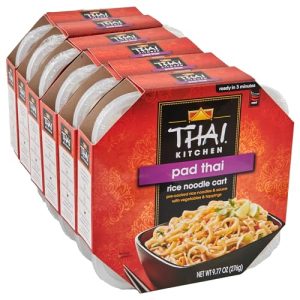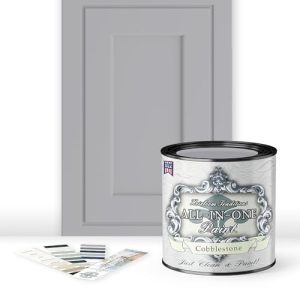Imagine stepping into your kitchen and feeling a rush of excitement, knowing every spice, herb, and seasoning is perfectly chosen to bring your dishes to life. A well seasoned kitchen is not just about having a collection of flavors; it’s about creating magic with every meal you make.
If you want to transform your cooking and impress everyone at your table, this article is for you. Keep reading to discover how to build a kitchen that turns simple ingredients into unforgettable dishes. Your taste buds—and your guests—will thank you.
Choosing The Right Spices
Choosing the right spices makes all the difference in cooking. The right spices bring flavor, aroma, and depth to your dishes. Understanding how to pick and use spices helps you create tasty meals every time.
Common Spices And Their Uses
- Black Pepper:Adds mild heat and works in almost every dish.
- Cumin:Gives a warm, earthy taste to soups and stews.
- Turmeric:Bright yellow color and a slightly bitter flavor, great for curries.
- Cinnamon:Sweet and warm, perfect for desserts and some savory dishes.
- Paprika:Adds color and a smoky or sweet flavor to meats and vegetables.
- Ginger:Sharp and spicy, used in both fresh and dried forms.
Selecting Fresh Vs. Ground Spices
Whole spices last longer and hold more flavor. Grinding them fresh releases oils that improve taste. Ground spices are quick and easy to use but lose flavor faster. Choose whole spices for slow cooking and ground for quick meals.
Storing Spices For Longevity
Keep spices in a cool, dark place away from heat and light. Use airtight containers to preserve aroma and flavor. Avoid storing spices near the stove or oven. Label containers with purchase dates to track freshness. Proper storage helps spices stay potent for months.
Balancing Flavors
Balancing flavors is essential in a well seasoned kitchen. It creates harmony in every dish. The right balance makes food taste exciting and satisfying. Sweet, savory, and spicy notes should work together. Herbs add freshness and depth. Adjusting spice levels helps suit different tastes. This art turns simple meals into memorable experiences.
Combining Sweet, Savory, And Spicy
Sweetness can soften strong spices. It adds a gentle contrast to savory flavors. Use ingredients like honey, sugar, or fruit to add sweetness. Savory elements include salt, soy sauce, or cheese. Spices like chili, pepper, and ginger bring heat and excitement.
- Pair chili with a touch of honey for balance.
- Use soy sauce with a pinch of sugar for depth.
- Add fruit to spicy salsas for a sweet kick.
The goal is to create a flavor blend that feels natural and pleasing.
Using Herbs To Complement Spices
Herbs brighten and soften spicy dishes. Fresh herbs like cilantro, basil, and parsley add lightness. Dried herbs offer earthy and warm notes. Use herbs to:
- Enhance the main spices without overpowering them.
- Bring freshness to rich and heavy dishes.
- Add a new layer of flavor complexity.
Herbs and spices together create a balanced and inviting taste.
Adjusting Spice Levels For Taste
Spice tolerance varies from person to person. Start with small amounts of chili or pepper. Taste often during cooking to avoid overpowering heat. Use these tips to adjust spice levels:
| Too Spicy | Fix |
|---|---|
| Too hot to enjoy | Add dairy like yogurt or milk to cool down |
| Too mild | Add a pinch more chili or pepper gradually |
Balancing spice ensures everyone enjoys the dish comfortably.
Techniques To Enhance Flavor
Enhancing the flavor in your kitchen doesn’t always mean adding more ingredients. Sometimes, it’s about how you treat the spices you already have. Simple techniques can transform ordinary dishes into memorable meals by unlocking the full potential of your seasonings.
Toasting Spices For Depth
Toasting spices releases their natural oils and intensifies their flavor. Use a dry skillet on medium heat and stir the spices constantly to avoid burning. The aroma changes as they toast—this is your cue to remove them from heat.
Try toasting whole spices like cumin seeds or coriander before grinding them. The difference is remarkable, adding a warm, earthy depth to your dishes that pre-ground spices just can’t match. Have you noticed how a pinch of toasted spice can elevate even a simple soup or stew?
Grinding Spices Fresh
Grinding spices fresh right before cooking preserves their vibrant flavors and aromas. Pre-ground spices lose potency quickly because their essential oils evaporate over time. Invest in a small spice grinder or mortar and pestle—your taste buds will thank you.
Even a quick grind can make a huge difference. Think about the burst of flavor when freshly ground black pepper hits your salad versus the dull taste from a shaker. How often do you refresh your spice stash?
Blooming Spices In Oil
Blooming spices means cooking them briefly in hot oil before adding other ingredients. This step helps release their essential oils and infuses the entire dish with richer flavor. Use a neutral oil and watch for the spices to sizzle gently without burning.
This technique works wonders in curries and sauces. For example, adding mustard seeds to hot oil until they pop adds a subtle nuttiness you won’t get otherwise. What flavors could you unlock by simply adjusting the start of your cooking process?
Spice Blends And Mixes
Spice blends bring rich flavors to every dish, making cooking simple and tasty. A well seasoned kitchen uses these mixes to create delicious meals quickly. Fresh and balanced spices turn ordinary recipes into memorable experiences.
Spice Blends and Mixes Spice blends and mixes are the heart and soul of a well-seasoned kitchen. They transform ordinary dishes into extraordinary culinary experiences. Whether you’re a seasoned chef or a home cook, creating and using spice mixes can elevate your cooking game.Creating Custom Blends
Creating your own spice blends is like painting with flavors. It offers you the freedom to tailor tastes to your personal preference. Imagine the satisfaction of crafting a perfect barbecue rub or an aromatic curry powder that becomes your secret ingredient. Start by identifying your favorite spices. Experiment with proportions until you find the balance that sings to your palate. Remember, the goal is to enhance, not overpower, the natural flavors of your dish.Popular Global Spice Mixes
Traveling the world through spice mixes can be as easy as opening your pantry. Each region boasts its unique blend that tells a story of culture and tradition. Consider the warm, earthy notes of Moroccan Ras el Hanout or the fiery kick of Indian Garam Masala. These blends are not just spices; they are passports to distant lands, encapsulated in a jar.Storing And Using Blends
Storing your spice blends properly is crucial for maintaining their potency and flavor. A dark, cool place is ideal. Airtight containers will keep them fresh and ready for your next culinary adventure. When using your blends, remember that a little goes a long way. Start small and taste as you go. This approach ensures that your dishes are perfectly seasoned, making each meal a delightful experience. Are there any spice blends that have transformed your cooking? Or perhaps a secret family mix passed down through generations? Share your spice stories and let your kitchen adventures inspire others!Spices For Different Cuisines
Spices shape the soul of every cuisine. They bring colors, aromas, and flavors that define dishes worldwide. Each culture uses a unique blend to tell its food story. Knowing these spices helps create authentic meals at home. It also broadens your palate and cooking skills.
Indian Spice Essentials
Indian cooking uses many spices that add warmth and depth. Common spices include:
- Turmeric – bright yellow, earthy taste, good for color
- Cumin – nutty and peppery flavor, used whole or ground
- Coriander – citrusy and sweet, seeds or powder
- Cardamom – sweet and floral, great in both savory and sweets
- Mustard seeds – sharp and pungent, often tempered in oil
- Fenugreek – slightly bitter, adds complexity
- Chili powder – brings heat and vibrant red color
These spices appear in various combinations across regions, creating rich, layered dishes.
Middle Eastern Flavors
Middle Eastern cuisine uses fragrant and earthy spices. Popular choices include:
- Sumac – tangy and lemony, used as a garnish
- Zaatar – a mix of thyme, sesame seeds, and sumac
- Cumin – essential for warmth and depth
- Cinnamon – adds sweet warmth, often in meat dishes
- Allspice – aromatic and slightly sweet
- Cardamom – subtle floral notes
- Cloves – strong and sweet, used sparingly
These spices combine to balance savory, sweet, and sour flavors beautifully.
Latin American Spice Profiles
Latin American dishes feature bold and vibrant spices. Commonly used spices include:
- Chili powder – ranges from mild to hot, for heat
- Oregano – earthy and slightly bitter, often Mexican oregano
- Cumin – adds smoky, warm flavor
- Annatto – bright orange, mild peppery taste
- Cloves – sweet and warm, used in sauces
- Coriander – fresh and citrusy
- Smoked paprika – rich, smoky, and slightly sweet
These spices give Latin dishes their lively and complex taste.
Troubleshooting Common Mistakes
Spices bring life and flavor to every dish. Yet, small mistakes can spoil the balance. Troubleshooting common spice errors helps keep dishes tasty and fresh. Understanding how to correct these issues saves time and effort in the kitchen. Below are ways to fix common seasoning problems and improve your cooking.
Avoiding Overpowering Dishes
Strong spices can easily take over a dish. Use less at first and taste as you cook. Balance bold spices with milder ingredients like cream or coconut milk. Adding acidity, such as lemon juice or vinegar, can soften harsh flavors. If a dish is too spicy, serve with plain rice or bread to calm the heat.
Fixing Blended Spice Imbalances
Spice blends sometimes taste off or too sharp. Identify the dominant flavor causing the issue. Add neutral or complementary spices to balance the blend. Sweet spices like cinnamon or sugar can reduce bitterness. Salt enhances all flavors but use it carefully. Blend well and let the mixture rest before tasting again.
When To Add Spices During Cooking
Timing affects spice impact on flavor. Early cooking lets spices blend and mellow. Adding spices late keeps their brightness and aroma. Ground spices work best when toasted briefly before use. Whole spices release flavor slowly and suit long cooking times. Adjust spice timing based on the dish and desired taste.
Frequently Asked Questions
What Are Essential Spices For A Well Seasoned Kitchen?
Essential spices include salt, pepper, garlic powder, paprika, cumin, and oregano. These basics enhance most dishes and suit various cuisines.
How Can I Organize Spices In My Kitchen Effectively?
Use clear jars or labeled containers. Store spices by frequency of use or cuisine type for easy access and freshness.
What Are The Benefits Of Using Fresh Versus Dried Herbs?
Fresh herbs offer vibrant flavor and aroma. Dried herbs have a longer shelf life and more concentrated taste, ideal for slow cooking.
How Do I Keep Spices Fresh And Flavorful Longer?
Store spices in a cool, dark place away from heat and moisture. Use airtight containers to maintain potency and aroma.
Conclusion
A well seasoned kitchen brings joy to cooking every day. Fresh spices and herbs add flavor and life to meals. Keeping your kitchen organized helps save time and stress. Small changes make a big difference in taste and ease. Enjoy the process of creating food you love.
A simple kitchen with good seasoning feels warm and inviting. Try new flavors and see how they transform dishes. Cooking becomes easier and more fun with a well stocked kitchen. Your meals will taste better, and you will feel proud.

Sophie Hartwell is the founder of KitchenQuik.com, where she shares kitchen tips, smart cooking hacks, and the best product picks to make everyday cooking easier and more enjoyable.




